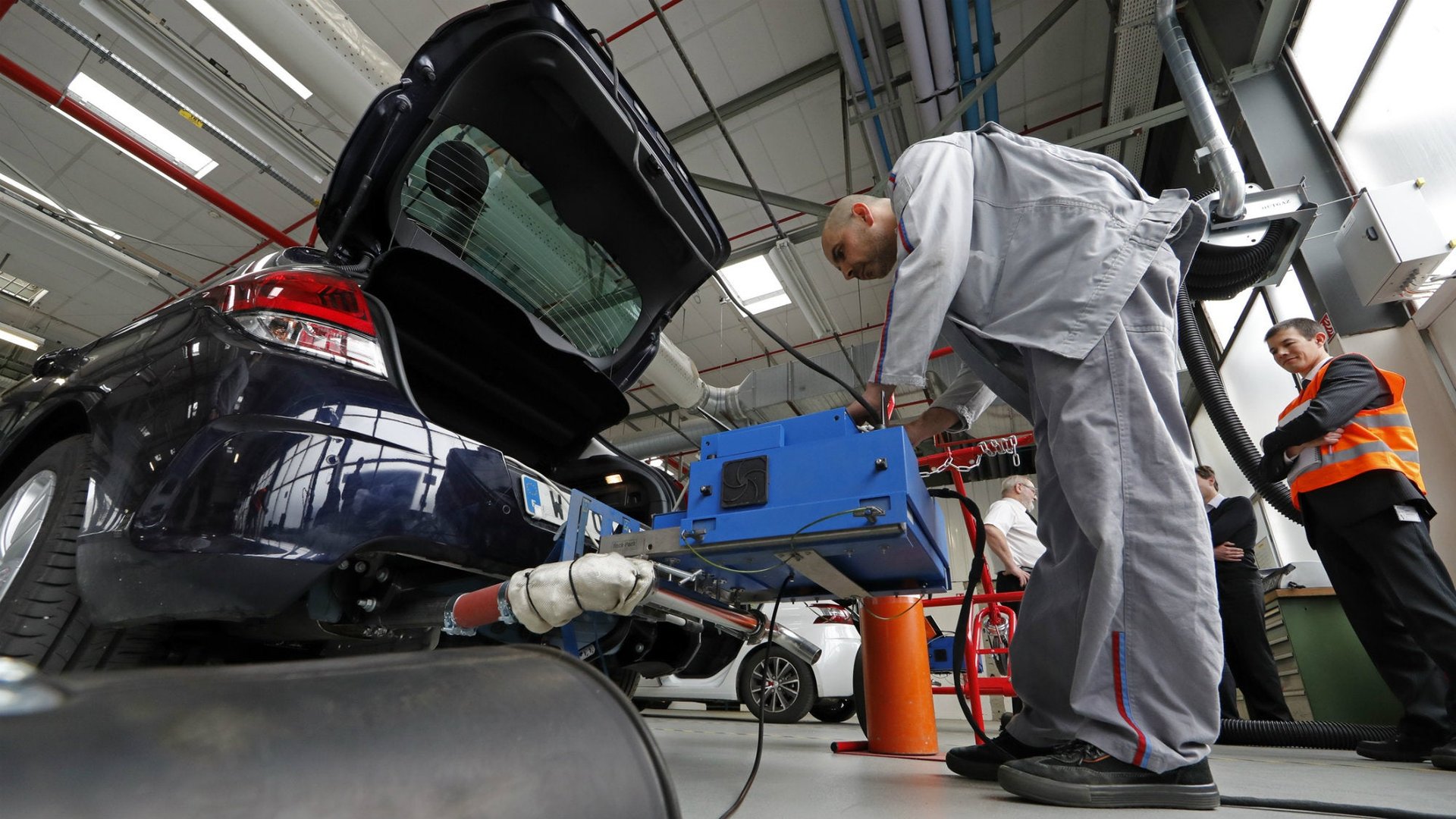All the creative ways carmakers manipulate emissions tests—that we know about
There was something fishy about auto-emissions tests long before Volkswagen got into trouble.


There was something fishy about auto-emissions tests long before Volkswagen got into trouble.
For years, the gap between the real world and the lab has been growing, as some popular models routinely spew 50% more pollutants on the road than they do during tests.
Volkswagen’s transgression was to install software in diesel cars that was specifically designed to thwart emissions tests: When a test was detected, emissions were reduced. This is costing the automaker dearly, as regulators around the world force VW to repair or buy back the offending vehicles, while car owners sue for damages.
Amid the uproar, regulators have been scrutinizing their emissions-testing regimes. This has forced more car companies to come clean about cheating on tests, as with Mitsubishi in Japan earlier this month. Many others are under suspicion, but deny wrongdoing.
Ultimately, there are plenty of perfectly legal ways to bend the rules without purposefully breaking them.
The latest shenanigans focus on something called the “thermal window.” Pollution-control systems do not perform well in cold weather, as condensation can trap soot in catalytic converters. Switching off emissions-control systems in cold weather avoids this problem, while also boosting engine performance and, obviously, emissions.
For this reason, carmakers always try to test their vehicles in the warmest possible weather. In Europe, the rules allow them to go up to 30°C (86°F). More importantly, out in the real world, some carmakers have adopted generous definitions of “cold,” dialing back emissions controls whenever outside temperatures drop below a balmy 18°C (64°F), according to Reuters.
British and German officials have spent the past six months studying the emissions of popular diesel models in detail, publishing their results at the end of last week. Neither group found intentional cheating à la Volkswagen, but both expressed doubts about carmakers’ liberal use of the thermal window. The Germans announced a recall of 630,000 cars—from Audi, Mercedes-Benz, Opel, Porsche, and Volkswagen—to tweak their software settings as a result.
This joins the long list of legal loopholes that allow carmakers to boost performance without falling foul of emissions rules. Some other tricks of the testing trade:
- Fully charging the battery and disconnecting the alternator to reduce the extra load on the engine
- Disconnecting brakes to remove friction
- Lightening the load by using bare-bones models without any optional extras
- Using overinflated tires on an abnormally smooth track with a slight decline, which reduces drag
- Taping over cracks and grills to improve aerodynamics
Over the weekend, German media suggested that Fiat could be in trouble for pollution-control systems that shut down after a certain time—a few minutes longer than the typical emissions test. Recent history suggests that there are almost certainly more ways that automakers have been gaming the system, with regulators enabling their bad behavior by maintaining lax rules and standards.
The US and EU have pledged to introduce tougher, real-world road tests to gauge emissions in the near future. Based on current evidence, car buyers may be unpleasantly surprised when they see the true trade-offs between performance and pollution.